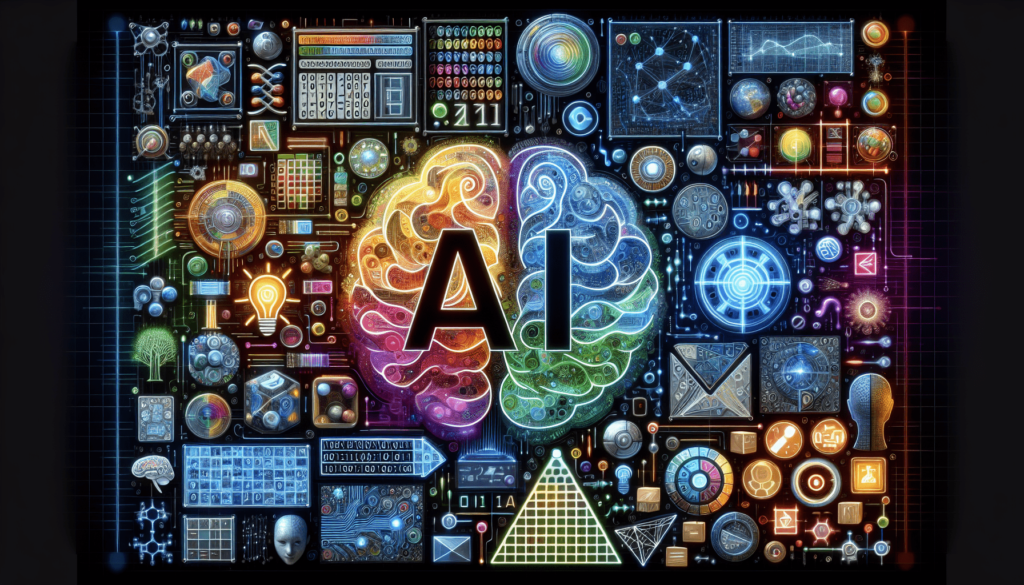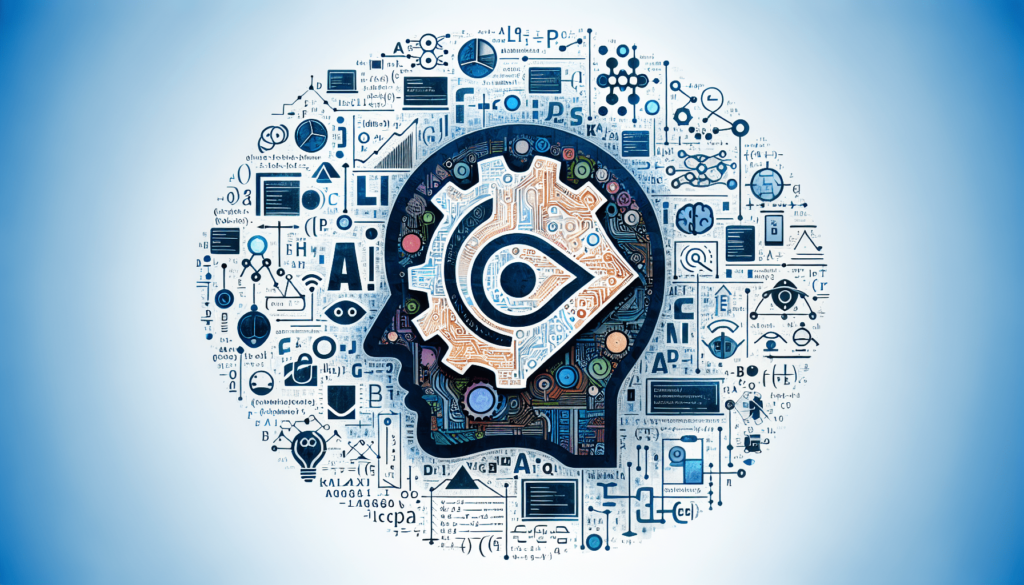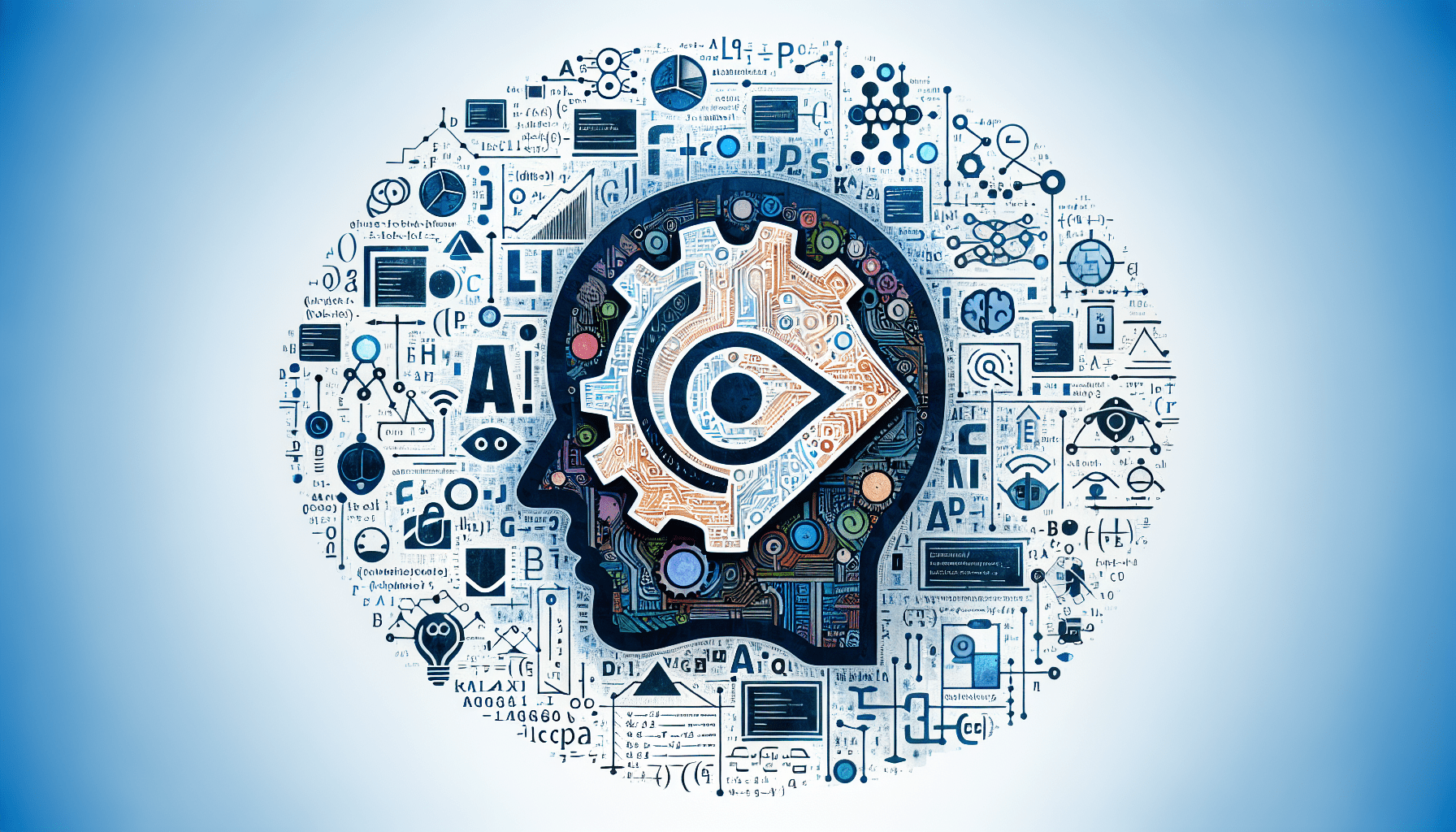Are you fascinated by the world of Artificial Intelligence (AI) and eager to learn more? If so, you may find yourself wondering about the prerequisites for diving into this exciting field. In order to embark on a journey of learning AI, there are certain foundations and skills that can greatly benefit you. From having a basic understanding of programming languages to possessing a curious and analytical mindset, this article will explore the key prerequisites for successfully delving into the world of AI. So, let’s get started on this thrilling learning adventure!
Mathematical Background
To have a solid understanding of AI, it is important to have a strong mathematical background. This includes knowledge in linear algebra, calculus, and probability and statistics.
Linear Algebra
Linear algebra is the foundation of many AI algorithms. It deals with vectors, matrices, and linear equations. Understanding linear algebra allows you to manipulate and transform data efficiently, which is crucial in AI tasks such as machine learning.
Calculus
Calculus is also essential in AI as it is used to describe and analyze the behavior of functions. Differentiation and integration are key concepts in optimizing AI algorithms, enabling the computation of gradients and finding the minimum or maximum of functions.
Probability and Statistics
Probability and statistics play a significant role in AI, especially in dealing with uncertainties and making informed decisions. Understanding probability theory allows you to model and quantify uncertainties, while statistical analysis helps in drawing meaningful insights from data.
Programming Knowledge
Proficiency in programming is vital for implementing and applying AI algorithms. While there are various programming languages used in AI, three particularly popular ones are Python, Java, and C++.
Python
Python is highly recommended for beginners starting in AI due to its simplicity and readability. It offers extensive libraries and frameworks, such as NumPy, Pandas, and TensorFlow, which provide efficient tools for data manipulation and machine learning.
Java
Java is a versatile programming language used in a wide range of applications, including AI. It is known for its scalability and performance, making it suitable for large-scale AI systems. Java also has libraries like Deeplearning4j and TensorFlow for developing deep learning models.
C++
C++ is a powerful programming language often used for optimization and high-performance computing in AI. It allows for low-level memory management and direct hardware access, making it efficient for implementing algorithms with high computational complexity.

Data Handling
Data handling is a crucial part of AI, as the quality and preparation of data greatly impact the accuracy and reliability of AI models. There are three main aspects of data handling: data cleaning, data visualization, and data manipulation.
Data Cleaning
Data cleaning involves removing inconsistencies, errors, and outliers from the dataset. This process ensures that the data is accurate and reliable, avoiding potential biases and misleading results when training AI models.
Data Visualization
Data visualization is the process of representing data visually to gain insights and communicate patterns effectively. It helps in understanding the relationships and trends within the data, enabling more informed decision-making in AI tasks.
Data Manipulation
Data manipulation involves transforming and reshaping data to fit the requirements of AI algorithms. This includes tasks like feature engineering, where new features are created from existing ones, and normalization, which scales the data to a standard range.
Machine Learning Concepts
Machine learning is a subset of AI that focuses on developing algorithms and models that can learn from data and make predictions or decisions. Understanding different machine learning concepts is essential for AI practitioners.
Supervised Learning
Supervised learning is a type of machine learning where the model learns from labeled data. It involves input-output pairs, where the algorithm learns the relationship between the input (features) and the output (labels) to make predictions on new, unseen data.
Unsupervised Learning
Unsupervised learning, on the other hand, deals with unlabeled data. The algorithm learns patterns and structures in the data without any predefined labels. Clustering and dimensionality reduction are common techniques used in unsupervised learning.
Reinforcement Learning
Reinforcement learning involves an agent that learns from its interactions with an environment through trial and error. It receives feedback in the form of rewards or penalties, enabling it to learn the optimal actions to maximize the rewards over time.

Basic Algorithms
Having a solid understanding of basic algorithms is vital in AI, as many advanced AI techniques build upon these fundamentals. Four essential algorithms to familiarize yourself with are linear regression, logistic regression, decision trees, and support vector machines.
Linear Regression
Linear regression is a simple yet powerful algorithm used for predicting a continuous target variable based on one or more input variables. It finds the best-fit line that minimizes the sum of squared differences between the predicted and actual values.
Logistic Regression
Logistic regression is a type of regression used for binary classification problems. It models the relationship between the input variables and the probability of the binary outcome. It is widely used in various AI applications, such as fraud detection and risk assessment.
Decision Trees
Decision trees are versatile algorithms that can be used for both classification and regression tasks. They create a tree-like model, where each internal node represents a feature, and each leaf node represents a class or a numeric value. Decision trees are interpretable and can handle both numerical and categorical data.
Support Vector Machines
Support Vector Machines (SVM) are powerful algorithms used for both classification and regression tasks. They find the best hyperplane that separates the data into distinct classes while maximizing the margin between the classes. SVMs are especially effective in handling high-dimensional data.
Deep Learning
Deep learning is a subfield of machine learning that focuses on neural networks with multiple layers. It has revolutionized the field of AI and is responsible for significant advancements in areas like image recognition and natural language processing.
Neural Networks
Neural networks are the building blocks of deep learning algorithms. They consist of interconnected artificial neurons, organized in layers, and they mimic the structure of the human brain. Each neuron computes a weighted sum of its inputs, applies an activation function, and passes the result to the next layer.
Convolutional Neural Networks
Convolutional Neural Networks (CNNs) are a specialized type of neural network designed to process grid-like data, such as images. They use convolutional layers to automatically learn spatial hierarchies of features, making them highly effective in tasks like image recognition and object detection.
Recurrent Neural Networks
Recurrent Neural Networks (RNNs) are designed to handle sequential data, such as time series or natural language. They have a feedback connection that allows information to be passed from one step to the next. RNNs are widely used in tasks like speech recognition, machine translation, and sentiment analysis.
Generative Adversarial Networks
Generative Adversarial Networks (GANs) are a class of deep learning models composed of two components: a generator and a discriminator. The generator generates synthetic data, while the discriminator distinguishes between real and fake data. GANs have been successful in tasks like image generation and data augmentation.
Statistics and Probability
Statistics and probability are fundamental concepts in AI as they provide the tools to analyze data, make inferences, and quantify uncertainties.
Central Limit Theorem
The Central Limit Theorem states that, regardless of the shape of the population distribution, the sampling distribution of the mean tends to follow a normal distribution as the sample size increases. This theorem is crucial for hypothesis testing and estimating confidence intervals.
Hypothesis Testing
Hypothesis testing is a statistical technique used to evaluate a claim or hypothesis about a population based on sample data. It involves setting up a null hypothesis and an alternative hypothesis and performing statistical tests to determine the likelihood of the observed results.
Probability Distributions
Probability distributions describe the likelihood of different outcomes in a random experiment or real-world scenario. Understanding different probability distributions, such as the normal distribution, binomial distribution, and Poisson distribution, helps in modeling and analyzing data in AI tasks.
Bayesian Statistics
Bayesian statistics is a framework for updating beliefs about a parameter or hypothesis based on new evidence or data. It involves incorporating prior knowledge or beliefs, updating them with observed data using Bayes’ theorem, and deriving posterior probabilities. Bayesian inference is used in various AI applications like probabilistic modeling and decision-making.
Computer Science Fundamentals
Having a strong foundation in computer science is essential for AI practitioners. This includes knowledge of data structures, algorithms, and operating systems.
Data Structures
Data structures are essential for efficiently storing and organizing data. Having a good understanding of data structures like arrays, linked lists, stacks, queues, trees, and graphs allows for efficient manipulation and retrieval of data in AI algorithms.
Algorithms
Algorithms are step-by-step procedures for solving problems or performing computations. Being familiar with various algorithms, such as sorting, searching, and graph algorithms, helps in developing efficient AI solutions and optimizing performance.
Operating Systems
Understanding operating systems is crucial, as AI systems often run on different operating platforms. Knowledge of processes, threads, memory management, and file systems allows for better utilization of resources and efficient implementation of AI algorithms.
Domain Knowledge
Having domain knowledge in specific areas can significantly contribute to the success of AI projects. While AI algorithms can be applied across different domains, having expertise and familiarity in certain domains can provide insights and context crucial for effective AI implementation.
Business
AI has revolutionized the business world, from sales forecasting and customer segmentation to fraud detection and recommendation systems. Having domain knowledge in areas like marketing, finance, or supply chain management allows for better understanding of the data and the specific challenges faced by the industry.
Medicine
In the field of medicine, AI has shown immense potential in areas like disease diagnosis, drug discovery, and personalized medicine. Having medical expertise alongside AI knowledge helps in understanding the complexities of medical data, ensuring accurate and reliable AI solutions.
Finance
AI has transformed the finance industry, with applications ranging from fraud detection and algorithmic trading to risk assessment and credit scoring. Domain knowledge in finance and understanding financial markets provides valuable context for developing AI solutions that cater to the specific needs of the industry.
Computer Vision
Computer vision focuses on enabling machines to gain visual understanding from digital images or videos. Having domain knowledge in computer vision is crucial for tasks like image recognition, object detection, and video analysis. Understanding concepts like image processing and feature extraction enhances the ability to develop accurate and effective computer vision models.
Natural Language Processing
Natural Language Processing (NLP) deals with the interaction between computers and human language. Having expertise in NLP is essential for tasks like sentiment analysis, text classification, and language translation. Understanding linguistic concepts and techniques drives better NLP model development.
Critical Thinking and Problem Solving
Developing strong critical thinking and problem-solving skills is essential for AI practitioners. These skills enable efficient decision-making, innovative thinking, and effective problem-solving in various AI tasks.
Logical Reasoning
Logical reasoning is the ability to think and analyze information in a logical and systematic manner. It involves understanding relationships, making deductions, and drawing conclusions based on evidence and logical rules. Strong logical reasoning skills are crucial for developing AI algorithms and effectively solving complex problems.
Analytical Skills
Analytical skills involve the ability to collect, organize, analyze, and interpret data to uncover patterns and draw insights. These skills are essential for understanding and extracting meaningful information from large datasets, enabling better decision-making and solution development in AI projects.
Creativity
Creativity is the ability to think outside the box, generate new ideas, and approach problems from different perspectives. It plays a crucial role in AI, as innovative solutions and approaches are often required to tackle complex problems. Cultivating creativity fosters the development of novel AI algorithms and the ability to push the boundaries of what is possible.
In conclusion, the prerequisites for learning AI encompass a strong mathematical background, programming knowledge, data handling skills, understanding of machine learning concepts, familiarity with basic algorithms, proficiency in deep learning techniques, knowledge of statistics and probability, solid computer science fundamentals, domain knowledge in relevant areas, and strong critical thinking and problem-solving skills. By acquiring these prerequisites, individuals can embark on a successful AI journey and contribute to the innovative and ever-evolving field of artificial intelligence.
